South Dakota Birding Hotspot
North Alabama Bend
Clay County
| Click on points to view actual ground photos and birding information for those locations. Use the Google tools to switch between road maps, terrain, or satellite images. |
Overview:
North Alabama Bend is a protected area of approximately 550 acres managed by the Army Corps of Engineers. It consists of land transferred tot he Army Corps in 2009, with "main management objectives to preserve, protect, and enhance the natural features and functions to provide habitat for native fish and wildlife, including threatened and endangered species". The general region is named for the steamboat North Alabama which sank in this region of the Missouri River.
Directions:
North Alabama Bend is about 3 miles southwest of the city of Vermillion. It's easily accessible with parking right next to a state highway.
There are multiple parking locations where access to North Alabama Bend is available, but directions here refer to the parking lot at "Point 1" in the image map, as this parking lot provides the easiest access to the river itself, and it's nearby forested habitat. The parking lot isn't well marked. but can easily be accessed. From the intersection of highways 50 and 19, just west of Vermillion, head south on Highway 19. You'll pass through cropland on both sides of the road before encountering a large open grassy area on the west side the highway, about 1.25 miles south of the Highway 50 and 19 intersection. A parking area is found at the far northeastern corner of North Alabama Bend, but better access is provided by the parking lot further south. Continue south until you are ~1.75 miles south of the Highway 50 and 19 intersection. This is the first location where you'll see extensive trees that approach the highway. The parking lot is at the boundary of where the trees, grassland, and highway meet, on the west side of the road.
Geographic Coordinates: 42° 45' 45.67" N, 96° 57' 28.38" W (coordinate of recommended parking area).
Description:
North Alabama Bend offers 550 acres of some terrific mixed habitat, with representation of prairie land, riparian woodlands, open savannah, and free-flowing Missouri River habitat. It's the latter that's the attraction of the region for me. With the damming of the Missouri River and construction of multiple dams from Gavin's Point dam near Yankton, northward through South and North Dakota, hundreds of miles of free-flowing Missouri River habitat was lost in the mid-20th century. In South Dakota, it's only the region from Gavin's Point Dam and eastward where the Missouri River flows unfettered by dams.
From a birding perspective, the reason that's important is that there are many species (animals and plants) that historically depended upon the free-flowing, shifting water levels of the Missouri. With inundation from the dams, hundreds of miles of natural sandbars were lost, areas that specialized nesting birds such as Least Terns and Piping Plovers depended upon. However, in this part of the Missouri, a more natural flow of the river occurs. This includes sandbar regions that shift and change as water levels change from year to year. At North Alabama Bend, except in areas of very high water levels, there are often expansive sandbar regions that offer perfect nesting habitat for Least Terns and Piping Plovers.
North Alabama Bend would be a great birding location even without the adjacency to the river, and the sandbar habitat. Massive cottonwoods and other deciduous trees line the banks of the Missouri and surrounding lowlands, offering some wonderful woodland birding. A large portion of North Alabama Bend is also grassland and prairie habitat. As one walks the main trails through North Alabama Bend, a birder can often simultaneously hear the calls of woodland birds on one side of the trail, and grassland species on the other side.
Note I myself am continuing to discover what North Alabama Bend has to offer. I only "discovered" the area myself in the spring of 2020!! I've now been down a number of times, and only once have I encountered another human being while birding. It's a hidden gem, but one well worth your time.
Points of Note (Click on numbers on the map to see photos of the locations):
In addition to a few ground photos and notes about areas to bird at North Alabama Bend, note the following link to an overview image depicting the well-maintained trails.
Overview Image - North Alabama Bend Trails
Good birding can start right from the parking lot! The parking lot right off Highway 19 is right at the intersection of the extensive prairie land to the west of the highway, and a strip of deciduous forest that lines the highway to the south of the parking lot (Point 1 in the map up above). Open the car door and you may well hear a simultaneous chorus of both woodland and prairie birds.
Point 2 highlights one of the two big prairie loops. Grassland, wildflowers, and sumac and other shrubs are found here, with broad unbroken expanses of habitat that are increasingly rare in South Dakota. The prairie loops also have three dugout ponds that provide water and attract wildlife, a relict of when this land was grazed with cattle.
Point 3 highlights one area of forested land at North Alabama Bend, but there are many locations where forest species can be explored. Treed areas range from open savannah, with widely spaced tree and abundant herbaceous or shrub undergrowth, to much more dense and impenetrable looking forest land.
Point 4 highlights the star attraction of North Alabama Bend for me...the free-flowing Missouri River and it's wonderful sandbar habitat. Note that conditions may change on the river as the seasons and water levels change.
Point 5 represents the unknown for me! In my explorations to date I haven't found any kind of maintained trail that penetrates the large forested area on the western side of North Alabama Bend. Given that past bird reports for the area include some goodie forest species like Whip-poor-will, it's an area I hope to explore in the near future.
Note that the sandbars themselves are restricted areas, to protect breeding Piping Plovers and Least Terns. When visiting the areas, please respect the warning signs and stay off of the sandbars themselves. Note you can usually get a pretty decent view of the specialty birds from the Missouri River shoreline.
Birds of Note:
The variety of habitat at North Alabama Bend, from grassland, to forest, to riparian area, to open river and sandbars, means there's a wide diversity of bird species that can possibly be seen. Any day is potentially a good day here, but the highlight for me are the Least Terns and Piping Plovers that use the sandbars on the river for nesting.
Many of the typical grassland species can be found here, as can many of the typical eastern deciduous forest species. See the individual point location pages above for insight into some of the commonly found birds in each of these habitats. Some of the "good" birds (for southeastern South Dakota) that can potentially be found here include:
Prairie/grassland/shrubby areas (excluding the more commonly found grassland birds in eastern South Dakota):
- Grasshopper Sparrow (often tough to find in eastern South Dakota)
- Eastern Meadowlark (rare in South Dakota in general and only found in a few spots)
- Lark Sparrow
- Orchard Orioles (notably mostly for their abundance here)
- Sedge Wrens (a fave wherever I find them!)
- Bell's Vireo (not too common in eastern South Dakota)
- LeConte's Sparrows (in migration)
Woodland areas:
- Rose-breasted Grosbeak
- Indigo Bunting
- Eastern and Spotted Towhees
- Red-eyed, Warbling, Yellow-throated Vireo
- Red-headed Woodpeckers (numerous)
- Whip-poor-will (not personally seen/heard, but there are reports)
- Yellow-billed Cuckoo
- Migrating spring warblers (speculative...eBird has few spring bird reports, but given the habitat it could be spectacular).
Other South Dakota Birding Locations (sorted by distance):
- Gavin's Point Dam (~45 miles)
- Newton Hills State Park (~50 miles)
- Outdoor Campus in Sioux Falls (~60 miles)
- Good Earth State Park (~70 miles)
- Big Sioux Recreation Area (~70 miles)
- Western Minnehaha County (~70 miles)
- Beaver Creek Nature Area (~75 miles)
- Dewey Gevik / Wall Lake (~75 miles)
- Madison Waterfowl Production Area (~100 miles)
- Dakota Nature Park, Brookings (~115 miles)
- Lake Thompson Area (~130 miles)
- Presho Area (~220 miles)
- Fort Pierre National Grasslands (~240 miles)
- Pierre / Oahe Dam Area (~270 miles)
- LaCreek National Wildlife Refuge (~300 miles)
Additional Information - North Alabama Bend:
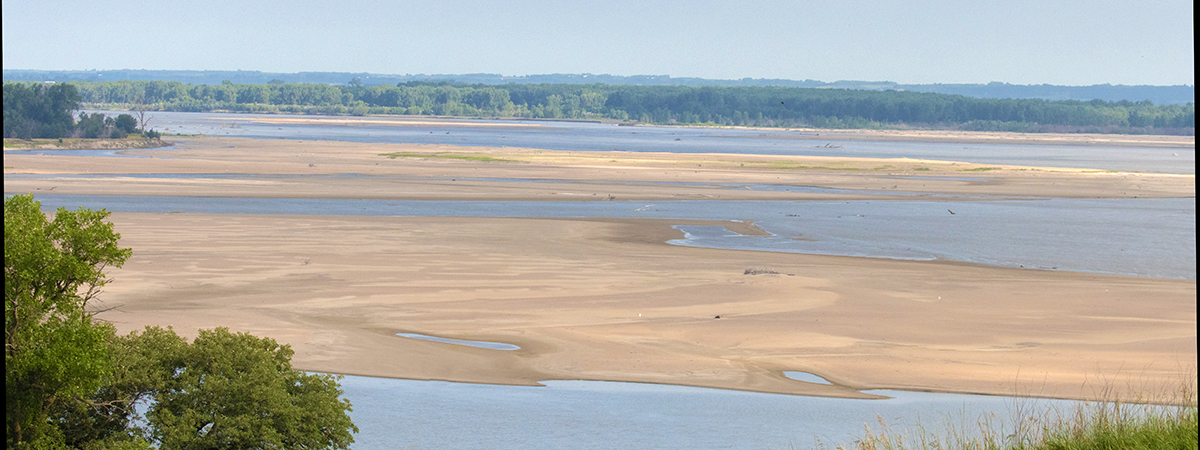 Overlook showing the free-flowing Missouri River and the large expansive sandbars present in the general area of North Alabama Bend. |
Bird Photos from North Alabama Bend |
||
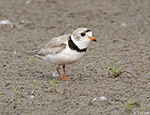 |
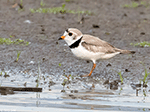 |
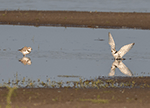 |
| Piping Plover | Piping Plover | Piping Plover |
 |
 |
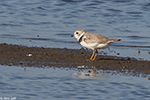 |
| Piping Plover | Piping Plover | Piping Plover |
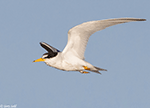 |
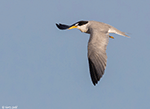 |
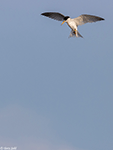 |
| Least Tern | Least Tern | Least Tern |
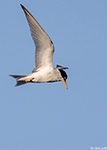 |
 |
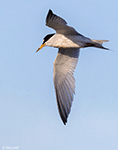 |
| Least Tern | Least Tern | Least Tern |
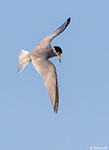 |
||
| Least Tern | ||

